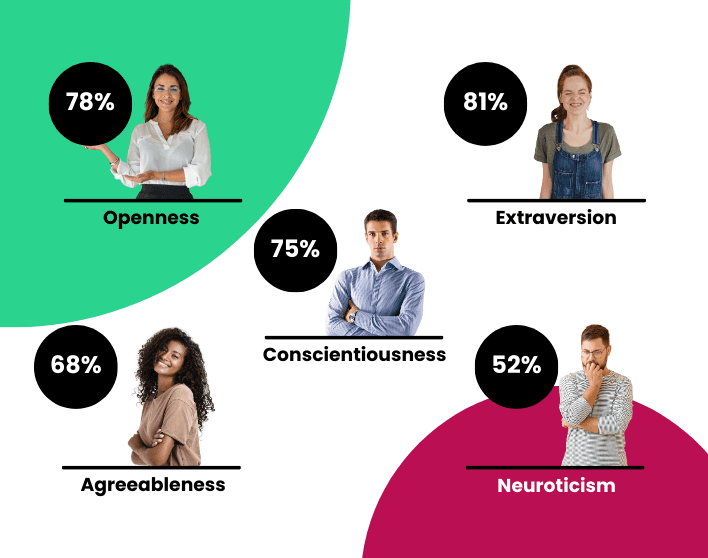The Bryq Team
HR Experts
Data-driven recruitment is becoming more and more commonplace in organizations today. Why? Well, recruiting using data can help your process be much smoother and easier. Save time and money on recruiting and attain better hiring outcomes at the end of it all.
What is Data-Driven Recruitment?
Data-driven recruitment is a simple concept. Hiring managers and human resources teams use statistics and data to inform hiring decisions. This can include everything from where they post a job ad, to shortlisting candidates, to interview processes. If your recruitment team uses data, they are likely to spend less on hiring, do it more efficiently, and make better hiring choices.
Why Use Data-Driven Recruitment?
One survey found that almost three-quarters of employers say that they have made a wrong hiring decision. A mistake like that is a costly one. Not only is there the cost of the recruitment process, but also loss of productivity, and likely a new hiring process when that person leaves. By using data-driven recruitment, you can increase the quality of your hire, but also achieve the following:
Discover Issues in Hiring
When you have plenty of hiring data to analyze, you may find that there are some issues in your hiring process. While having problems may not be ideal, it’s better that you know about them now that you’re paying attention to your data. Maybe it’s common for candidates to reach a specific section in your application before exiting and not completing it. If you find something like this, there is likely an issue with your application form. Knowing this enables you to investigate and fix it.
Focus on Diversity
HR data can also inform your recruitment processes. Take a look at the different demographics in your organization. This will provide insight into whether you have an issue with unconscious bias in your hiring processes. Look for areas where the problem may lie, for example, not hiring certain ages, ethnicities, genders, and more.
Objective Hiring Decisions
Interview scores and cognitive assessments are both part of recruitment data as well. By using these to make your hiring decisions, you will have solid objective reasoning for your hires. This provides you with legal defensibility, should you need it.
Increase Productivity
Analyze how long your time to hire is. Then you can take a look at every individual part of the process to find out where the delays occur. For example, how long does it take your administrators to respond to candidates or book in interviews? These can be some of the lengthiest parts of the process, and by speeding them up, you can hire much more efficiently.
Show Improvements
When you start recruiting based on data, you will gain more and more data as you go along. Hopefully, your quality of hires will improve, you will spend less on recruitment, and do it faster. After you have been focusing on data-driven recruitment for a while, analyze these types of outcomes to show that this recruiting approach is benefiting the organization.
Improve Candidate Experience
Happier candidates mean happier new recruits as well as a better employer brand image. Start using data to find out how candidates find the experience of applying for a job at your company. You may be surprised by what you find out. For example, implementing a mobile application form can make a lot of difference to the perception of candidates in your recruitment process. It would help if you focus on making the process as easy and smooth as possible for people by keeping them informed. This should shine through in your candidate experience scores, and if not, it’s time to head back to the drawing board.
Better Forecasting
Ever wish you had a crystal ball to see into the future? Data can (sort of) provide you with that. Usually predicting recruitment is mostly a guessing game. Knowing how much you have spent on your last hire, for example. It has a lot of different factors, making it hard to come up with a figure.
Tracking your turnover rate can give you a lot of information to forecast the future of turnover in your organization. If turnover is reducing, thanks to your efforts, then you can predict more accurately how much you will need to spend on recruitment next year.
Tips on Implementing Data-Driven Recruitment
Metrics to Use
The first thing you will need to know is what metrics are useful in data-driven recruitment. Here are some examples of statistics that will show you how your process is performing:
Time to hire (how long the hiring process takes from start to finish)
Cost per hire (the total cost it is to hire each new person)
Hiring source (e.g., social media, job boards, careers page)
Acceptance rates (the percentage of people you offer a role to that accept)
Candidate experience information (if you survey candidate experience – if not, you should start)
Clarify with Hiring Managers
As a recruiter, it’s your job to make sure that your hiring managers are happy and well-informed. Before delving into the data head-first, stop and check with them what they want and what’s important to them. Ask them questions to find out their perspectives and thoughts. For example, the question ‘where do you think the bottleneck is in recruiting?’ can uncover unprecedented insight.
Data Collection
Don’t spend time manually tracking everything. To do this right, you’re going to need some robust software to do the job for you. When you are using software such as an applicant tracking system, online assessment, or hiring platform, you will have all the data collected automatically. Take the hard work out of it for you, as well as the chance of human error, by using the technology available to you.
If you want to spend less on recruitment, do it more efficiently, and have more satisfied hiring managers and employees, focus on the data. You can leverage the insights gained from statistical analysis to improve candidate experience, increase diversity, and make better hiring decisions.








